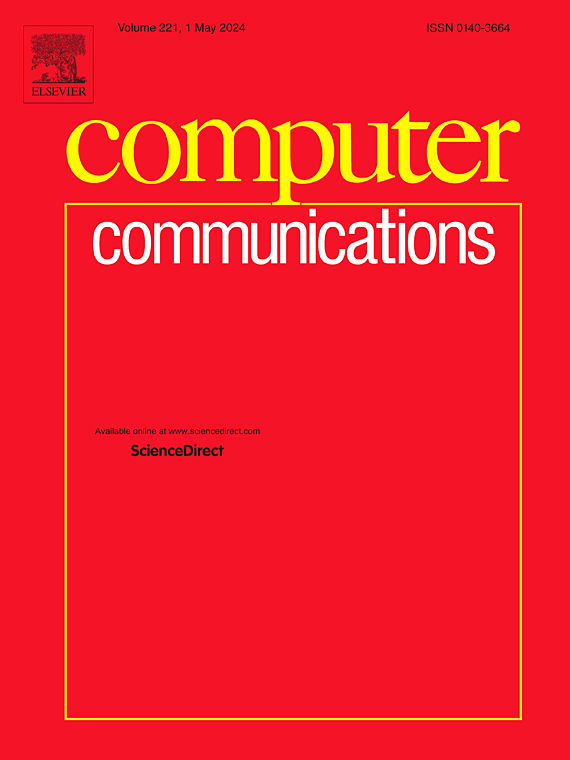基于SDN的智能船舶弹性网络体系结构研究
IF 4.5
3区 计算机科学
Q1 COMPUTER SCIENCE, INFORMATION SYSTEMS
引用次数: 0
摘要
随着信息通信技术(ICT)在海事领域的广泛应用,智能船舶越来越依赖于系统集成、控制和设备数据采集。实时数据传输是保证船舶系统稳定运行的关键。然而,通信链路故障频繁成为影响数据传输的关键因素。为此,我们提出了基于sdn的智能船舶网络架构sdn -智能船舶网络架构(SDISN),以简化网络管理,实现智能船舶的集中控制。在此基础上,设计了针对不同海上通信业务的链路故障恢复模型,以解决突发通信链路故障问题。该模型首先收集智能船舶网络的状态,并预先定义针对不同海上通信业务流的备份流规则。考虑业务流的特点,优化的目标是使生命安全通信流的传输时延最小,使船舶业务通信流的开关TCAM利用率最大。对于生命安全通信流,我们引入了一种逐步放宽约束的启发式算法。同时,我们将备份流规则预加载到交换机中。对于船舶作业通信流,采用两阶段优化算法,将相应的备份流规则存储在控制器中。此外,我们还提出了一种基于动态调整交换机内存负载的商业通信流备份存储策略。与现有方法相比,SDISN在链路故障恢复机制中平衡了资源消耗和故障响应时间,满足了智能船舶实时数据传输的需要。最后,在真实网络环境的试验台上进行了实验,进一步验证了该模型的有效性和高效性。本文章由计算机程序翻译,如有差异,请以英文原文为准。
Research on intelligent ship resilient network architecture based on SDN
With the extensive adoption of information and communication technology (ICT) in the maritime field, intelligent ships are increasingly dependent on system integration, control, and data collection from devices. Real-time data transmission is essential for ensuring stable ship system operations. However, communication link failures frequently become key factors impacting data transmission. To this end, we propose an SDN-based intelligent ship network architecture, SDN-Intelligent Ship Network Architecture (SDISN), to simplify network management and enable centralized control of intelligent ships. On this basis, we design a link failure recovery model tailored for different maritime communication services to address the issue of sudden communication link failures. The model begins by collecting the status of the intelligent ship network and pre-defining backup flow rules for different maritime communication service flows. Considering the service flow characteristics, the optimization aims to minimize transmission delay and maximize switch TCAM utilization for life-safety communication flows and ship operational communication flows, respectively. For life-safety communication flows, we introduce a heuristic algorithm that progressively relaxes constraints. Meanwhile, we preload backup flow rules into switches. For ship operational communication flows, we apply a two-stage optimization algorithm, storing the relevant backup flow rules in the controller. Additionally, we propose a backup storage strategy for commercial communication flows based on dynamically adjusting the memory load of switches. Compared to existing approaches, the SDISN satisfies the need for real-time data transmission in intelligent ships while balancing resource consumption and fault response time in its link failure recovery mechanism. Lastly, experiments conduct on a testbed in a real network environment further validate the model's efficacy and efficiency.
求助全文
通过发布文献求助,成功后即可免费获取论文全文。
去求助
来源期刊

Computer Communications
工程技术-电信学
CiteScore
14.10
自引率
5.00%
发文量
397
审稿时长
66 days
期刊介绍:
Computer and Communications networks are key infrastructures of the information society with high socio-economic value as they contribute to the correct operations of many critical services (from healthcare to finance and transportation). Internet is the core of today''s computer-communication infrastructures. This has transformed the Internet, from a robust network for data transfer between computers, to a global, content-rich, communication and information system where contents are increasingly generated by the users, and distributed according to human social relations. Next-generation network technologies, architectures and protocols are therefore required to overcome the limitations of the legacy Internet and add new capabilities and services. The future Internet should be ubiquitous, secure, resilient, and closer to human communication paradigms.
Computer Communications is a peer-reviewed international journal that publishes high-quality scientific articles (both theory and practice) and survey papers covering all aspects of future computer communication networks (on all layers, except the physical layer), with a special attention to the evolution of the Internet architecture, protocols, services, and applications.
 求助内容:
求助内容: 应助结果提醒方式:
应助结果提醒方式:


